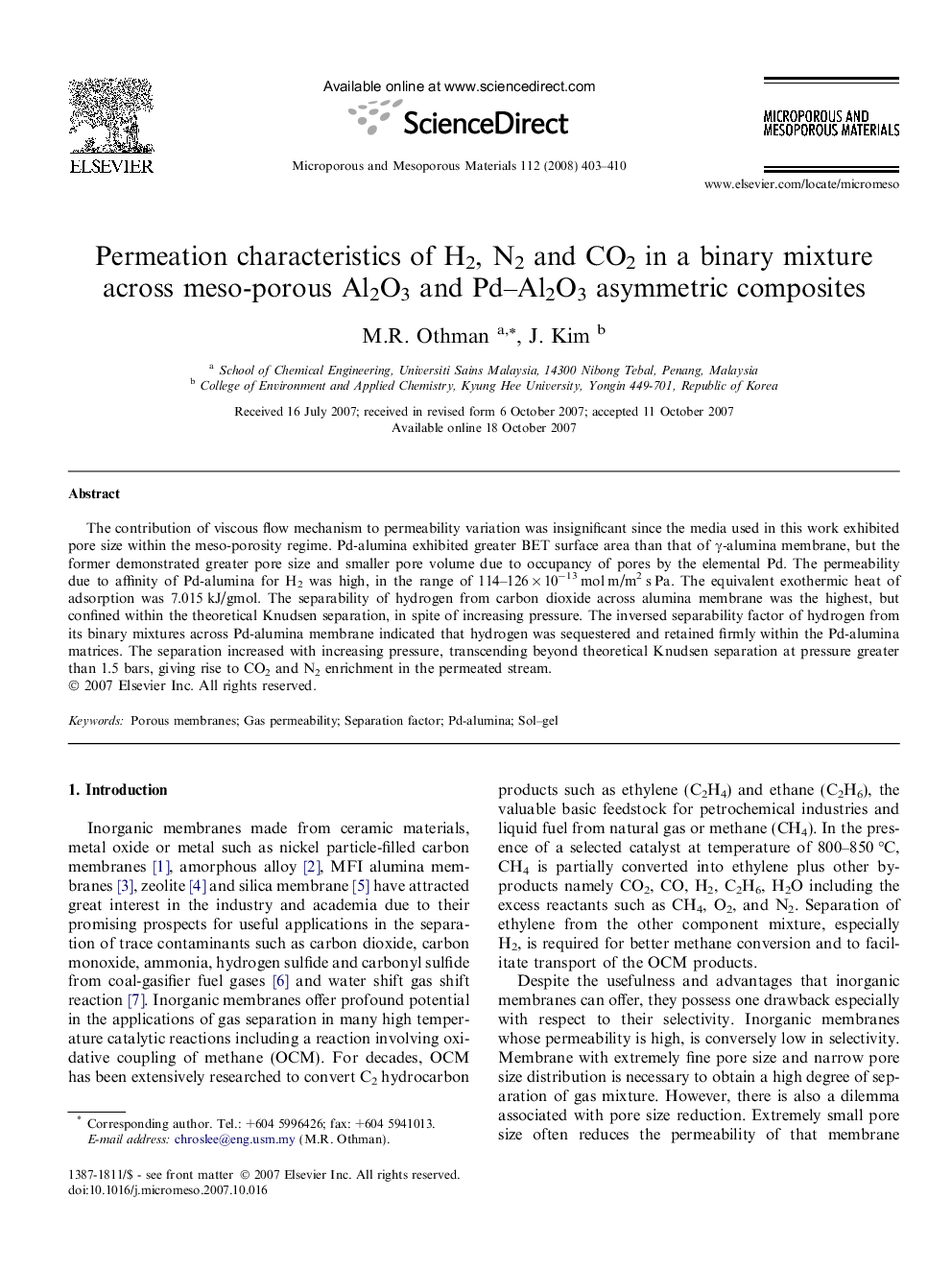| Article ID | Journal | Published Year | Pages | File Type |
|---|---|---|---|---|
| 76107 | Microporous and Mesoporous Materials | 2008 | 8 Pages |
The contribution of viscous flow mechanism to permeability variation was insignificant since the media used in this work exhibited pore size within the meso-porosity regime. Pd-alumina exhibited greater BET surface area than that of γ-alumina membrane, but the former demonstrated greater pore size and smaller pore volume due to occupancy of pores by the elemental Pd. The permeability due to affinity of Pd-alumina for H2 was high, in the range of 114–126 × 10−13 mol m/m2 s Pa. The equivalent exothermic heat of adsorption was 7.015 kJ/gmol. The separability of hydrogen from carbon dioxide across alumina membrane was the highest, but confined within the theoretical Knudsen separation, in spite of increasing pressure. The inversed separability factor of hydrogen from its binary mixtures across Pd-alumina membrane indicated that hydrogen was sequestered and retained firmly within the Pd-alumina matrices. The separation increased with increasing pressure, transcending beyond theoretical Knudsen separation at pressure greater than 1.5 bars, giving rise to CO2 and N2 enrichment in the permeated stream.
